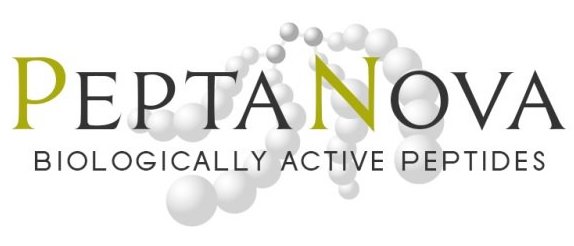Adrenomedullin 2 (Human)
Intermedin (Human)
4421-s 0.1 mg | 185.00 EUR
Synthetic Product (Disulfide bond between Cys10-Cys15)
Thr – Gln – Ala – Gln – Leu – Leu – Arg – Val – Gly – Cys – Val – Leu – Gly – Thr – Cys – Gln – Val – Gln – Asn – Leu – Ser – His – Arg – Leu – Trp – Gln – Leu – Val – Arg – Pro – Ser – Gly – Arg – Arg – Asp – Ser – Ala – Pro – Val – Asp – Pro – Ser – Ser – Pro – His – Ser – Tyr – NH2
| (M.W. 5100.7) | C219H349N69O66S3 |
The purity is guaranteed to be higher than 99% by HPLC
Intermedin | Adrenomedullin 2 is a potent Cardiovascular and Renal Regulator / Suppressor for Food Intake and Gastric Emptying
Novel Adrenomedullin in mamals:
In the post-genome era, there are many approaches and methods available to predict unknown peptides from the treasures in genome sequences. Two groups applied such modern techniques and recently discovered the same novel peptide by using separate strategies.
Five adrenomedullins (AM1-5) were cloned and identified from the pufferfish, Takifugu rubripes. Three of them [AM1/4/5] are counterparts of well-known mammalian adrenomedullins (AM) (Code 4278-s (Human) and 4281-s (Rat)), but the other two peptides [AM2/3] were unidentified in mammals [Biochem. Biophys. Res. Commun., 311, 1072 (2003)]. Next, Takei and coworkers attempted to detect cDNA encoding mammalian peptides corresponding to the already identified adrenomedullins in pufferfish. As a result, they successfully discovered human and rat adrenomedullin 2 (AM2) as a 47-residue peptide with 6 amino acid divergence [FEBS Lett., 556, 53 (2004)].
Another group, Roh and coworkers, utilized a phylogenetic profiling approach to analyze GenBank databases, which led them to identify human and rat intermedin (IMD); 47 amino acid peptides of these species (IMDL, named after long form of intermedin) [J. Biol. Chem., 279, 7264 (2004)], which is identical to AM2 . They also predicted IMDS (IMD short) as another possible product processed at single Arg-residue, located at 7 amino acid residue downstream of the amino-terminus of IMDL.
The synthetic cognate peptides of AM2 and two types of IMD showed the following biological activities:
- dose-dependent hypotensive effects at doses between 0.1-10 nmol/kg in mice (AM2) and at 10 and 50 nM in normal and SHR rats (IMD), respectively, the efficacy of AM2 in mice seems to be higher than that of AM,
- antidiuretic and antinatriuretic activities in mice (AM2), and
- anorexic activity in fasted mice through gastric emptying suppression (IMD).
It has been suggested that these activities may be regulated through its own specific receptor or through shared calcitonin receptor-like receptor (CRLR) and related proteins, such as receptor activity modifying protein (RAMP) complexes.
This newly discovered AM2 (or IMD) peptide may serve diverse, multifunctional purposes, therefore, future studies should clarify AM2’s role as it relates to AM function and its family of peptides.

